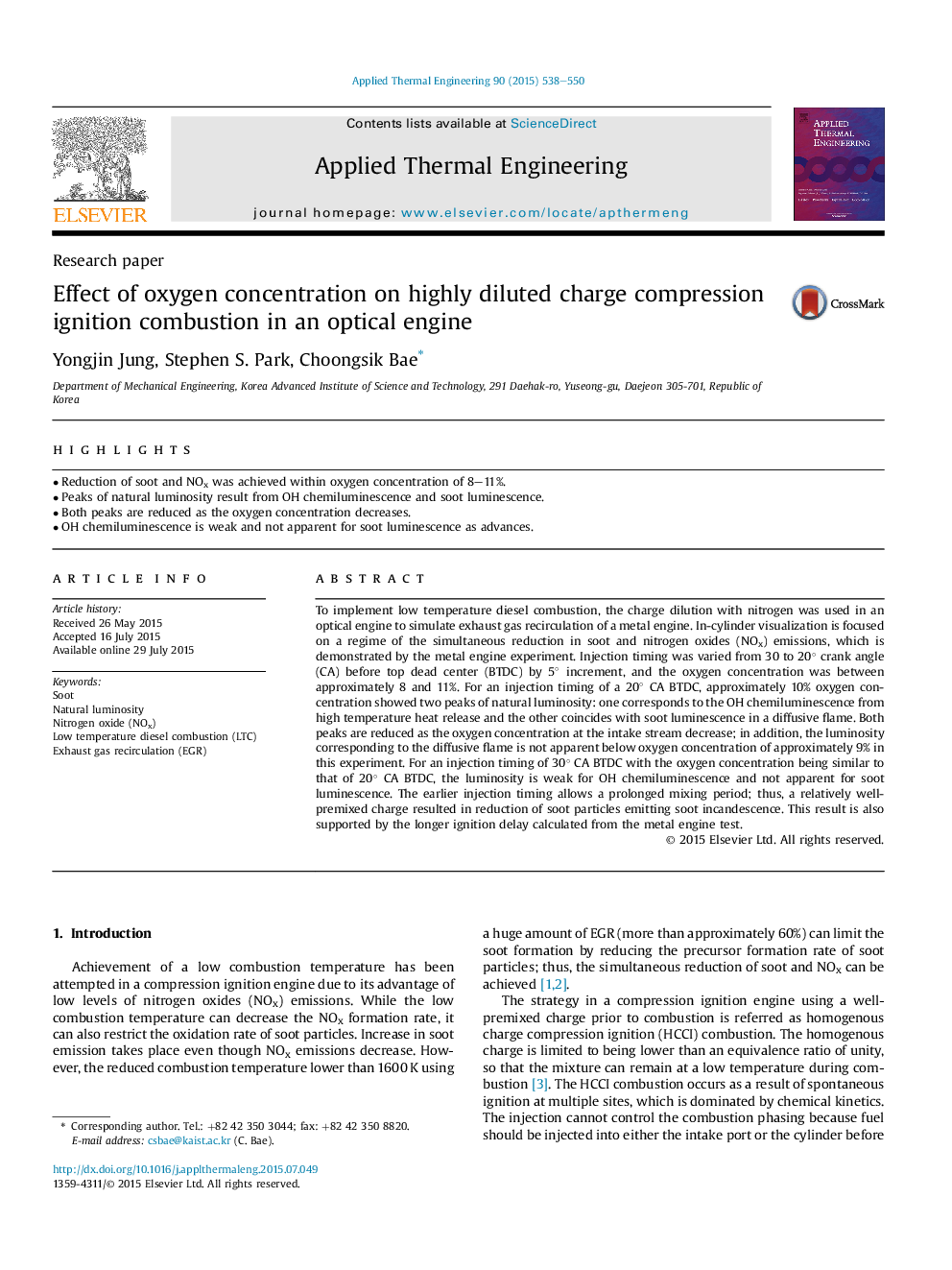| Article ID | Journal | Published Year | Pages | File Type |
|---|---|---|---|---|
| 7048862 | Applied Thermal Engineering | 2015 | 13 Pages |
Abstract
To implement low temperature diesel combustion, the charge dilution with nitrogen was used in an optical engine to simulate exhaust gas recirculation of a metal engine. In-cylinder visualization is focused on a regime of the simultaneous reduction in soot and nitrogen oxides (NOx) emissions, which is demonstrated by the metal engine experiment. Injection timing was varied from 30 to 20° crank angle (CA) before top dead center (BTDC) by 5° increment, and the oxygen concentration was between approximately 8 and 11%. For an injection timing of a 20° CA BTDC, approximately 10% oxygen concentration showed two peaks of natural luminosity: one corresponds to the OH chemiluminescence from high temperature heat release and the other coincides with soot luminescence in a diffusive flame. Both peaks are reduced as the oxygen concentration at the intake stream decrease; in addition, the luminosity corresponding to the diffusive flame is not apparent below oxygen concentration of approximately 9% in this experiment. For an injection timing of 30° CA BTDC with the oxygen concentration being similar to that of 20° CA BTDC, the luminosity is weak for OH chemiluminescence and not apparent for soot luminescence. The earlier injection timing allows a prolonged mixing period; thus, a relatively well-premixed charge resulted in reduction of soot particles emitting soot incandescence. This result is also supported by the longer ignition delay calculated from the metal engine test.
Related Topics
Physical Sciences and Engineering
Chemical Engineering
Fluid Flow and Transfer Processes
Authors
Yongjin Jung, Stephen S. Park, Choongsik Bae,
